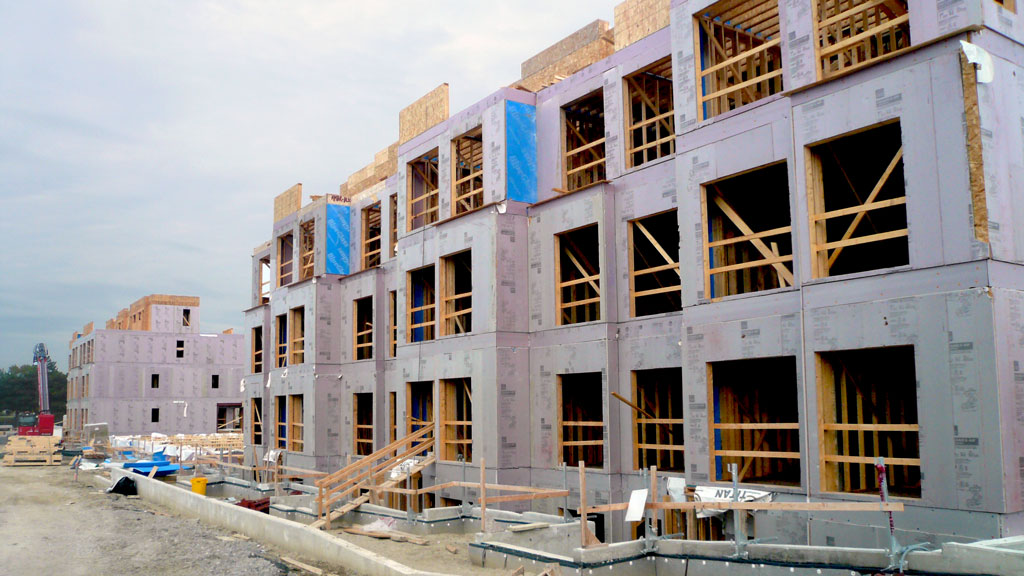A worker from Eastern Canada paints a bleak picture of the current status of the construction economy in Eastern Canada.
“I am a union painter in Halifax with a one hour drive each way to work,” she said in a comment on the Daily Commercial News website. “I cannot afford the gas to work anymore at $1,200 per month on my wage. I am working for nothing and forced to quit my job I love as the price of gas has consumed my paycheque, rendering me helpless.”
It’s these situations that are compounding the labour shortage in Atlantic Canada at a time when workers are desperately needed.
Duncan Williams, president and CEO of the Construction Association of Nova Scotia, said the labour shortage started to become an issue during 2021/2022 because the number of major projects were increasing, but people were retiring, immigration slowed and so did new entrants such as apprentices.
“What I don’t think anybody really anticipated is Nova Scotia became a real safe haven destination,” said Williams.
“We had a housing supply that quickly got gobbled up and then of course with all of the newer projects that are coming, it’s only magnified this problem…Right now, I would estimate we are about 3,000 bodies short in Nova Scotia.”
He added, “There is also a growing shortage based on we need more housing, we need more infrastructure, we need more schools. We need all the things that go to support a growing community.”
There is also a strong demand for single family, duplexes and multi-residential.
“All of those trades are in high demand and in short supply,” said Williams. “The commercial sector is still very strong. The industrial sector has taken a bit of a dip, but it is going to rapidly ramp up within the next six months…We’ve got hydrogen, windfarms, electrification. Those big projects coming are going to require 3,000, 4,000, 5,000 (workers).”
He also adds the regulatory environment in Nova Scotia poses specific challenges for the workforce.
“There is no silver bullet to this. Nova scotia was a have-not province for so long,” he stated. “We had too many people and too few jobs. So, whether it was intentional or not, we have a lot of protectionist policies, regulations, processes that are coming back to haunt us. We’re peeling back the layers of those onions.
“Nothing is off the table at this point because it’s a crisis.”
Sam Sanderson, general manager of the Construction Association of Prince Edward Island, said although he has been talking about a shortage since 2017, it has escalated substantially since that time, and in all aspects of the industry.
“We’re seeing it on the engineering side and the architectural world, the whole consultant world,” he said.
During COVID, P.E.I. became a safe place that people moved to, which created an influx of new people in the province.
“(That) had an impact on the labour force, on housing,” said Sanderson. “The numbers we were hearing up until last week was somewhere in the vicinity of 2,000 units a year were needed to meet our growing population right now.”
A couple thousand additional people in the trades are needed.
“Does industry have the capacity to do it? Not right now we don’t,” he said. “2021 was the biggest year ever in the history of construction in P.E.I. and we’ve seen about 1,290 units built. That’s a variety of apartments, townhouses, single family dwellings. We’re hard pressed to build much more than that with what we have as far as skilled tradespeople.”
Population growth and the need for housing isn’t unlike the rest of Canada in many respects, explained ����ӰԺ chief economist Alex Carrick.
“They (Atlantic Canada) have had increases in population for the last little while,” he said.
“They’re going to need the housing.”
Canada is adding about a million people per year.
“We’ve never done that before,” he said. “When you add a million people per year, you are adding the equivalent of a city the size of Calgary or Edmonton, so that is huge in terms of the demands that are placed on construction activity and the demands that are going to be placed on housing starts. It’s going to be very hard to address this whole issue of housing affordability because the demand is considerably in excess of the supply.”
That’s where technology, artificial intelligence, automation and modular construction comes in.
“If you haven’t got the workers, the industry is going to have to increasingly find ways to build these projects,” he said. “I don’t see how the industry can do anything but really embrace this. It’s going to change construction.”
Another thing that’s causing changes is the energy transition and the move away from fossil fuels over the next few decades.
“They’re building these giant, EV and BEV car plants and battery plants and then there’s these big computer chip making plants,” Carrick said. “Atlantic Canada won’t be left out of this.”
For more on the challenge Atlantic Canada faces, listen to The Construction Record podcast here.
Follow the author on Twitter @DCN_Angela








Recent Comments
comments for this post are closed